Mount Parish history
Primary tabs
How did Mount Parish get its name? Originally I thought it was from some connection with the Methodist church on the corner of Queen's Rd E and Kennedy Road. But it turned out the church came after the Parish, not the other way around.
This page has the full story, together with an early sketch of the area. The author, Peter Davis, writes that Hong Kong's first land-based Royal Naval Hospital opened when the navy bought the "Seaman's Hospital which had been first opened in Wan Chai in 1843 [...]. This water-front hospital, which [...] had flourished for many years, was by the 1870s running at a loss. A letter from Vice-Admiral Shadwell, the Commander-in-Chief on the China Station, reveals that William Loney, as chief Medical Officer on the station from October 1872 to January 1875, played a large part in the successful move ashore. [...] The hills on which the hospital - and the later Infectious Diseases Hospital - were built, were given the names Mount Shadwell and Mount Parish respectively (Commodore John E. Parish was the "Naval Officer Commanding" in Hong Kong between 1873 and 1876)."
So, as with the English names of many of Hong Kong's landmarks, 'Parish' was the name of a British man in Hong Kong at that time. As for the Methodist church, that originally acted as a church for the seamen in the area.
Now, what about that comment 'This water-front hospital' above? Yes, in those days the hospital was on a hillside overlooking the sea. Here's the map in 1863, you should just about be able to make out the words 'Hospital Hill' in the middle. At that time it would still have been the Seaman's hospital overlooking the shoreline - the present-day Johnston Road. Queen's Rd East is shown on the map south of the hospital, then south of that lies the grid of roads around Stone Nullah Lane.
Moving forward to 1889, the hospital is still marked the 'Seaman's Hospital', though it should already have been the Royal Naval Hospital according to the note above. The route of Kennedy Road is there, though this last section of it that joins Queen's Rd E. was originally called Albany Lane.
In 1931, more changes. 'Mount Parish' appears at last, and is the site of the Infectious Diseases Hospital. Morrison Hill to the North East was still a hill, though the map says it is 'in course of demolition', as it was used as landfill for the new reclamation up to Gloucester Road, also clearly shown on the map.
The RN Hospital has changed shape from a cross to more of a 'T' shape, so it looks as though three of the four original wings had been extended. (The sketch on Davis's site shows no room for extension - either they had to enlarge the hill or more likely there was a certain amount of artistic licence taken when that sketch was made.)
In the map of 1946 the new reclamation now shows it is heavily built-up. Just to the South West of the RN Hospital you can see the Wanchai market.
In 1964, yet another round of reclamation is underway. The Infectious Diseases Hospital has been demolished, and Mount Parish is now the site of the Wah Yan College, which opened in 1955 and is still there today. The outline of the RN Hospital is still there - I wonder when it was demolished?
By 1990, everything is pretty much the same as it is today. Kennedy Road has been straightened out, the RN Hospital has been replaced by the Ruttonjee, and the name 'Mount Parish' has dropped off the map.
I took another walk around the area, to see what I'd missed the first time. Walking along Queen's Rd East from the junction with Stubbs Road, there is this granite pillar on bank to your left.
Any idea what it represents? It is inscribed with a '7' on top, an anchor in the middle, and '1905' underneath. Next comes the junction with Kennedy Road, with the Methodist church on the left, Wanchai market dead ahead in the centre, and the hill on the right where the RN Hospital stood.
Low down in the retaining wall of that hill is another inscribed stone. This one says 'I L 86', then an anchor, then 'AD 33'. The Wanchai market was built in the early 1930s, so I guess this wall was built at the same time. (Does anyone know what the 'I.L.' stands for? I have seen those initials on other stones around Hong Kong)
Here is the entrance to the Wanchai Market building, which unfortunately is scheduled for demolition.
You can still get up on the roof, so here's the view back towards the junction of Kennedy Road and Queen's Rd E, with a view of Wah Yan college behind the trees. I guess this roof is where the British troops we mentioned in the last piece were positioned with their 18-pounder?
It's hard to see why they'd have chosen this place as it seems to have a very limited view. But of course the surrounding buildings were so much lower then, they'd probably have had a view of the whole of Mount Parish, and much of Kennedy Road too.
To see just how different it would have been then, take a look at this photo of the area in the late 1930s. Walking down the staircase from the market roof I saw the familiar shape of the doorway to an air-raid tunnel - there must be another network under Hospital hill.
Looking back along the retaining wall and there's another entrance a little further along.
Just across Queens Rd E, opposite the market is Stone Nullah Lane, a road that was visible on the 1863 map. Here on the corner of that Lane and King Sing St is a building that's hard to miss.
It's a wonder that it has managed to last this long; it would certainly have been here before any of those air raid tunnels were built. There can't be many buildings in Hong Kong that still have wooden stairs?
I wanted to take a look at this road to compare it with this excellent picture of Stone Nullah Lane that reader Moddsey had kindly sent in (thanks also to him for several other pieces of information I've used here).
The naval hospital dominates the area, and is in its extended 'T' shape, not the earlier cross shape. The stone-lined nullah that gave the lane its name is also clear to see. The blue building photographed above had not yet been built, though a very similar building stands at the bottom of the lane.
On the right of the picture is the Pak Tai Temple, looking much as it does today. In fact if you go back to the older picture on Davis's site, you'll see the temple's roof also appears there in the bottom right corner. There are many more trees along the lane now, which make it difficult to get exactly the same view. Still, the lines of the temple roof today are clearly the same as in the earlier pictures:
If you have any more information about the area's history, we'd love to hear from you.
References:
- PRO catalogue: http://www.grs.gov.hk/ws/english/es_online_cata.htm
- Maps: The easiest way to look at them is to see the 'Mapping Hong Kong' book in the map section of Central Library. They also have larger scale copies of the individual maps available.
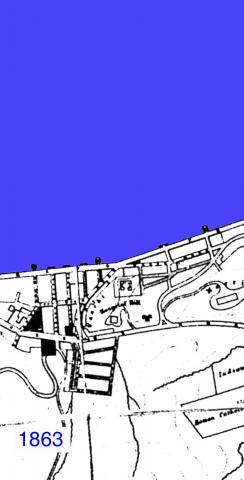
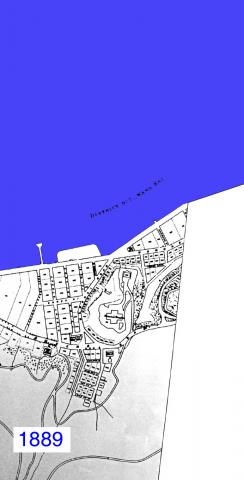
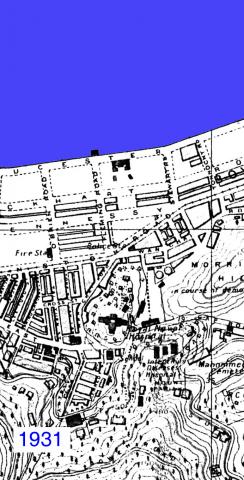
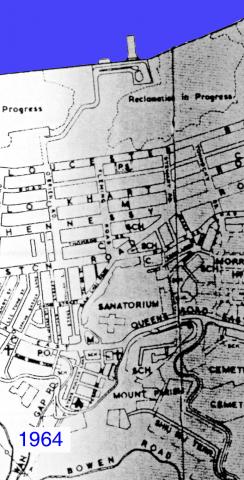
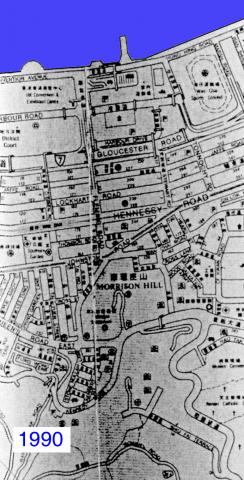

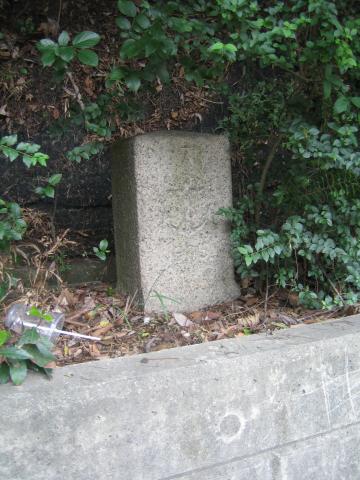
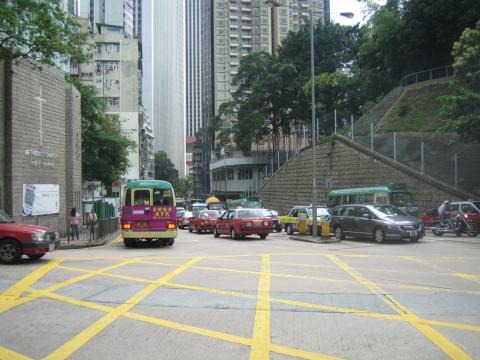
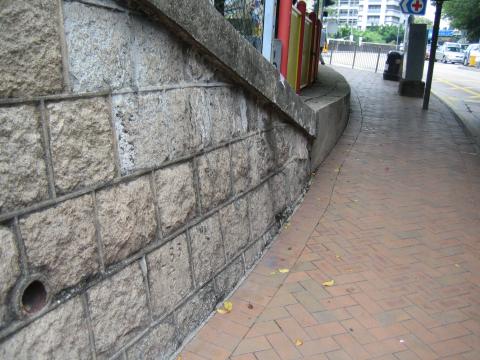
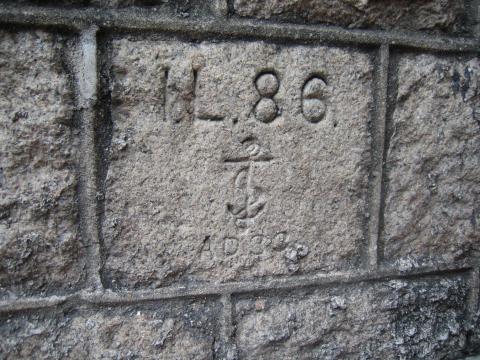
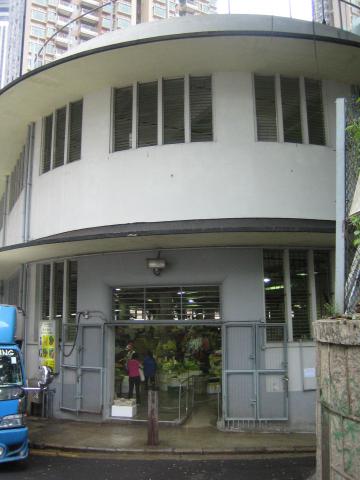
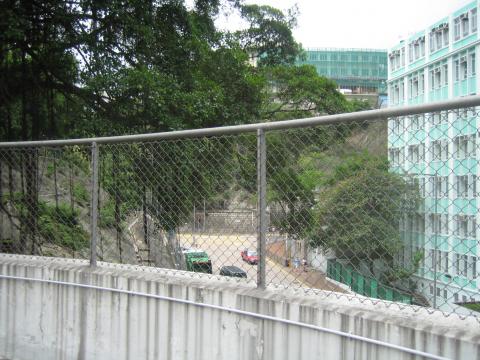
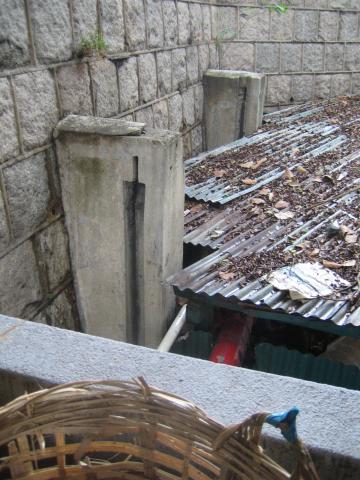
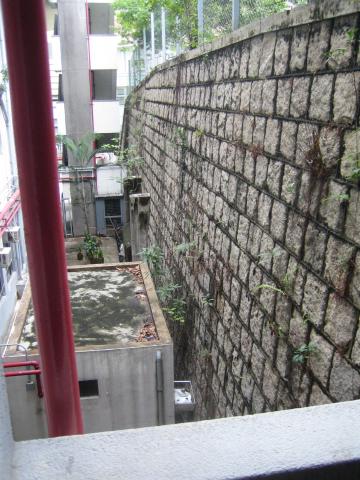
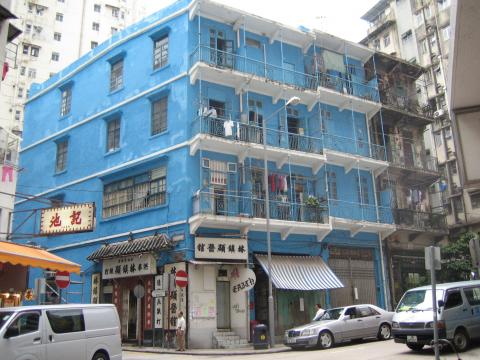
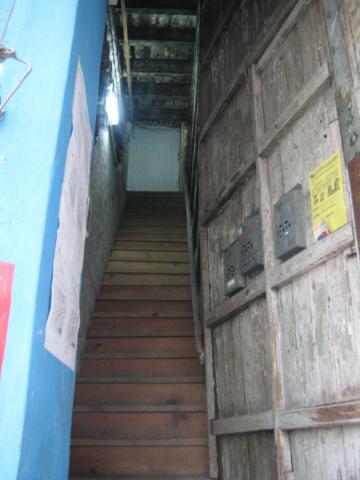
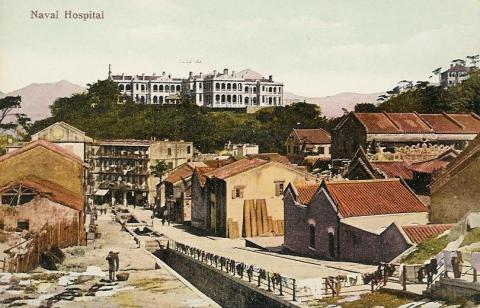
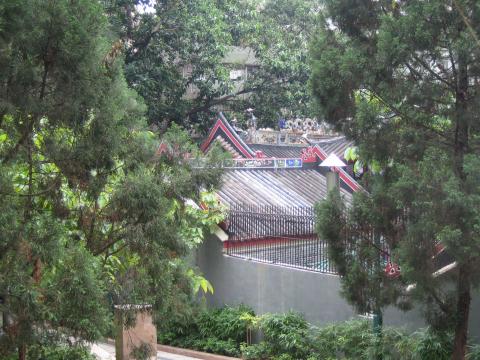


Comments
I.L.
Aha!
Pak Tai Temple
wow...you unearth yet more history
'Island' or 'Inland' ?
IL, KIL and NKIL
Methodist Church background
Two more photos of the old RN Hospital
Mount Parish ca 1930
Pak Tai Temple
The Blue House
sticker shock
More Blue House info
I like your articles very
Glad you enjoy the site, and
Kennedy Street
Haunted house
Haunted house
Nam Koo Terrace, aka 55 Ship Street
St.James Settlement
Air-raid tunnel opening in Wan Chai Park?
Tunnel Network No. 3
Yes, there is one of the old portals on that slope. The network runs under Hospital Hill, and connects to the portals behind Wanchai Market shown in the photos above.
regards, MrB
UPDATE: 21 June 2007 - Full details of the tunnels under Hospital Hill here.
Hello,I have read your
Hello, I have read your articles and I like very much.
I am also interest in old buildings in HK. Last month I visit Ruttonjee Hospital & Wan Chai Market, I found two old building elements placed on the side of the access road leading from Wan Chai Market to Ruttonjee Hospital.
I wounder these two old building elements are the remains of Old Ruttonjee Hospital or Naval Hospital? I have taken the photos and put in the following links.
Regard Bush HUNG
Wooden steps
Gateposts?
Thanks for the photos. Maybe those stone items were the decorations from the tops of the old gateposts?
It's hard to know how old they are though. I can't find any old photos of the buildings - does anyone else have any ideas?
MrB
''7' on top, an anchor in the middle
Boundary stones for land
Naval marker stone #8
Yes, Moddsey pointed out stone #8 some time back. I took a photo but have been lazy in posting it! Here it is:
This stone is also on Queen's Rd East, but is back near the junction with Stubbs Rd. It seems like there should be a whole series of them - at least #1..#6 - but I haven't seen any others.
Any suggestions what boundary they marked?
MrB
Hey, you're right! I saw
Mount Parish
wooden stairs
I.L. stands for "Inland Lot"
Marker Stones of Land Lots
1A Kotewell Rd
IL question
re: IL question
Photos of Hospital Hill
A couple we were sent some time ago, both taken around 1910:
Naval Hospitals on Mount Shadwell and Mount Parish
The Inland Lot designations for the captioned hospitals:
Inland Lot No. 86 - Naval Hospital, Mount Shadwell;
Inland Lot No. 87 - Naval Infectious Disease Hospital, Mount Parish
A reader mentioned some time back noticing a stone on the retaining wall of Mount Shadwell inscribed with "I.L. 86, an anchor, then AD 13". In 1913, a retaining wall along the base of Mount Shadwell was constructed so as to render the grounds less accessible from the Public Works Storeyard (prior to the 2nd generation Wanchai Market) built nearby. It would appear that parts of the retaining wall had been re-constructed in the 1930s.
I.L. 86, an anchor, then AD 13
Just looking through the Mapping Hong Kong book, and on map 3-5b the 'PWD Stores' are shown where Wanchai Park stands today. So maybe those 'AD 13' stones are in one of the walls around Wanchai Park?
I.L. 86, an anchor, then AD 13
The inscription was found at ground level on the retaining wall fronting Queen's Road East next to the demolished Wanchai Market. Looked in Wanchai Park but could not find any.
As an aside. the two air raid shelters built into the slope of Mount Shadwell are now exposed and clearly seen at the works site of the demolished Wanchai Market.
re: I.L. 86, an anchor, then AD 13
Good find. I'll have to take a walk past there to see the ARP tunnel entrances.
(I.L. NOS. 86 AND 87) Royal Naval Hospital Wanchai
(I.L. NOS. 86 AND 87) Royal Naval Hospital Wanchai
Public Records Office: HKRS156-1-171
Gate posts to loge at bottom of Seamans Hospital
These well preserved stone crowns adorned the gateposts to the lodge at the foot of the Seamans Hospital that previously occupied the current Ruttonjee Hospital site.
You can see them in-situ in the old photographs of the Seamans Hospital elsewhere on this site. One historical postcard mistakenly labelled 'police station' shows them quite clearly.
It would be nice if they could be re-habilitated and used for an entrance elsewhere as they are in such crisp and good condition.
Rgds
J
Any idea where the gate posts
Any idea where the gate posts went to? They disappeared a few years ago. I passed by there a few weeks ago, and still no sign of them.
Regards, David
AD33
I met Gary Tam at last week's HKICON talk. He believes that the AD stands for "Admiralty Department", similar to the stones we've seen with WD for War Department. He gave me this link to a page that shows the stones marked AD33 and AD13: http://www.seewide.com/space-article-id-268945.html
Since there's both AD33 and AD13, that means my idea of "Anno Domini 1933" doesn't make any sense. Instead these are likely two stones, numbers 13 and 33, out of a much larger set that outlined the boundary of this Admiralty Department lot of land.
Thanks to Gary for the explanation,
Regards, David
Any idea where the gate posts
I spotted one of the gateposts in the garden at Ruttonjee Hospital today. No sign of the second one. I have posted a photo.
Any idea where the gate posts
I spotted one of the gateposts in the garden at Ruttonjee Hospital today. No sign of the second one. I have posted a photo.
Gate Post Photo
http://gwulo.com/atom/25371
1900s Royal Naval Hospital Entrance
Appears a police station was located at the entrance to the hospital.
Missing Gatepost Stone Previously at Ruttonjee Hospital
The missing gate post stone previously at Ruttonjee Hospital is now inside the Freni Care and Attention Home at Shiu Fai Terrace. I have posted a view available on Google Maps: http://gwulo.com/atom/26018
I have also posted an early photo (date unknown) of the hospital entrance at: http://gwulo.com/atom/26017
CM
Pages